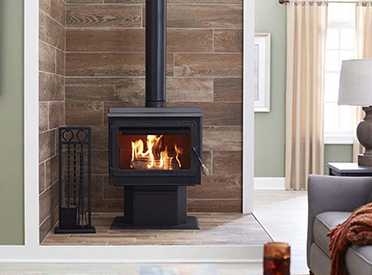How to calculate your heating area?
When choosing a heater, calculating the right heating area is paramount so you can target the right models for your space.
1. Calculate the theoretical heating area
- If you only need to heat one floor, your total heating area is equal to the area of that floor. For example, for a 30’ X 30’ single storey house, the heating area is 900 ft².
- If you need to heat two floors, calculate the total area of the lower floor (where the unit is installed) and then add 50% of the area of the upper floor. So, if you install a unit in the basement and you have 900 ft² per floor, you will need a unit with a capacity of at least 1,350 ft² (900 + 450).
- If you need to heat more than two floors, calculate the total area of the lower floor (where the appliance is installed) and then add 50% of the area of the middle floor, and finally add 25% of the upper floor. So, if you install a unit in the basement and you have 900 ft² per floor, you will need a unit with a capacity of at least 1.575 ft² (900 + 450 + 225).
2. Calculate the real heating area
You must now adjust the theoretical area to heat by adding a comfort margin, based on the following elements, to obtain the real area to heat:
- Insulation level of your home: the better a home is insulated, the more heat is kept inside. The number, type and orientation of doors and windows as well as the thermal resistance of the walls influence the insulation level of your home.
- Air circulation: a space with a large number of divisions will be more difficult to heat because heat distribution is not optimal. Since heat goes up, spaces with high or cathedral ceilings are also more difficult to heat.
- Type of use: an appliance used to heat your home almost continuously must be powerful enough to avoid overheating and premature wear. Conversely, a stove used to create atmosphere with occasional fires should not be too powerful in order to avoid making fires that are too small and generate more creosote.
- Location: the further north you are, the harsher the winter and the more you will need a high-performance stove to achieve the same comfort. The same logic applies to places very exposed to the wind.
For example, for a theoretical heating area of 1,400 ft² with very favorable conditions (ambiance use, good insulation, good air circulation, etc.): it is recommended to slightly exceed the theoretical heating area and to aim for an actual heating area of 1,600 ft².
For the same theoretical heating area, but with less favorable conditions (sustained use, poorer insulation, poorer air circulation): it is recommended to add a greater margin of comfort and aim for an actual heating area of 1,800 ft², or even 2,000 ft².

